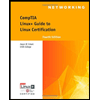List Command: ls, ls -a, ls -l Change Directory: cd, cd .., cd ~, pwd Make or Remove (Empty) Directory: mkdir, rmdir Copy or Move or Remove Files: cp, mv, rm, rm –r Find Files: find –iname [filename to find] Find Text in Files: grep “string to search for” [file to search in] Process: ps, top Practice the following Windows commands so you can compare how the same Windows commands work in the Linux environment. In Windows, you will need to run the commands by opening a DOS/Command window. You can get help on any of these commands by accessing the built-in manual for any command by entering: help [cmd]. Directory Command: dir, dir /AD, dir /O:GSD Change Directory: cd (displays current directory), cd .., cd ~, pwd Make or Remove (Empty) Directory: mkdir, rmdir Copy or Move or Delete Files: copy, xcopy, move, del Find Files: dir “file to find, use * for wildcards” /s Find Text in Files: find “string to search for” [file to search in] Process: tasklist
List Command: ls, ls -a, ls -l Change Directory: cd, cd .., cd ~, pwd Make or Remove (Empty) Directory: mkdir, rmdir Copy or Move or Remove Files: cp, mv, rm, rm –r Find Files: find –iname [filename to find] Find Text in Files: grep “string to search for” [file to search in] Process: ps, top Practice the following Windows commands so you can compare how the same Windows commands work in the Linux environment. In Windows, you will need to run the commands by opening a DOS/Command window. You can get help on any of these commands by accessing the built-in manual for any command by entering: help [cmd]. Directory Command: dir, dir /AD, dir /O:GSD Change Directory: cd (displays current directory), cd .., cd ~, pwd Make or Remove (Empty) Directory: mkdir, rmdir Copy or Move or Delete Files: copy, xcopy, move, del Find Files: dir “file to find, use * for wildcards” /s Find Text in Files: find “string to search for” [file to search in] Process: tasklist
A+ Guide To It Technical Support
10th Edition
ISBN:9780357108291
Author:ANDREWS, Jean.
Publisher:ANDREWS, Jean.
Chapter15: Troubleshooting Windows Startup
Section: Chapter Questions
Problem 5TC: In question 4 above, your friend is having problems finding the bootmgr file and asks for your help....
Related questions
Question
Getting to know the Terminal Windows
-
- List Command: ls, ls -a, ls -l
- Change Directory: cd, cd .., cd ~, pwd
- Make or Remove (Empty) Directory: mkdir, rmdir
- Copy or Move or Remove Files: cp, mv, rm, rm –r
- Find Files: find –iname [filename to find]
- Find Text in Files: grep “string to search for” [file to search in]
- Process: ps, top
- Practice the following Windows commands so you can compare how the same Windows commands work in the Linux environment. In Windows, you will need to run the commands by opening a DOS/Command window. You can get help on any of these commands by accessing the built-in manual for any command by entering: help [cmd].
- Directory Command: dir, dir /AD, dir /O:GSD
- Change Directory: cd (displays current directory), cd .., cd ~, pwd
- Make or Remove (Empty) Directory: mkdir, rmdir
- Copy or Move or Delete Files: copy, xcopy, move, del
- Find Files: dir “file to find, use * for wildcards” /s
- Find Text in Files: find “string to search for” [file to search in]
- Process: tasklist
Expert Solution
This question has been solved!
Explore an expertly crafted, step-by-step solution for a thorough understanding of key concepts.
This is a popular solution!
Trending now
This is a popular solution!
Step by step
Solved in 3 steps

Knowledge Booster
Learn more about
Need a deep-dive on the concept behind this application? Look no further. Learn more about this topic, computer-science and related others by exploring similar questions and additional content below.Recommended textbooks for you

A+ Guide To It Technical Support
Computer Science
ISBN:
9780357108291
Author:
ANDREWS, Jean.
Publisher:
Cengage,

CompTIA Linux+ Guide to Linux Certification (Mind…
Computer Science
ISBN:
9781305107168
Author:
Jason Eckert
Publisher:
Cengage Learning

A+ Guide To It Technical Support
Computer Science
ISBN:
9780357108291
Author:
ANDREWS, Jean.
Publisher:
Cengage,

CompTIA Linux+ Guide to Linux Certification (Mind…
Computer Science
ISBN:
9781305107168
Author:
Jason Eckert
Publisher:
Cengage Learning